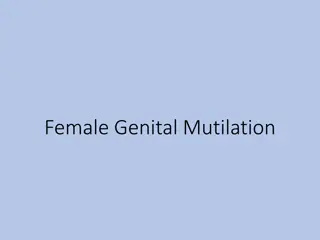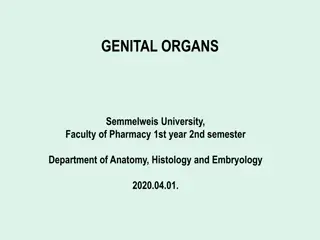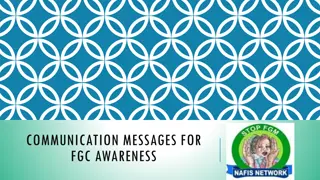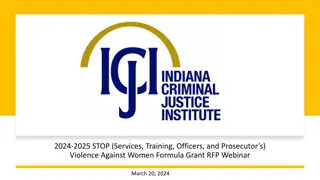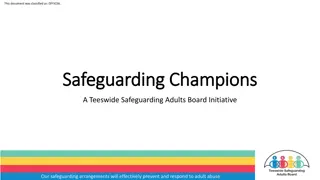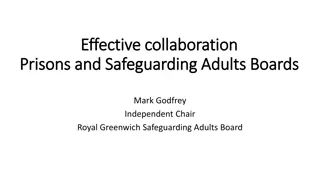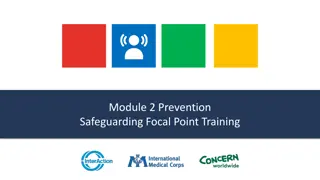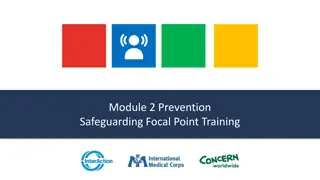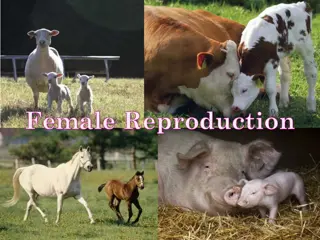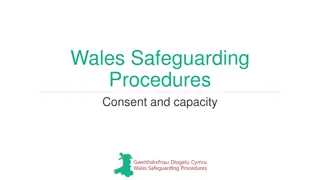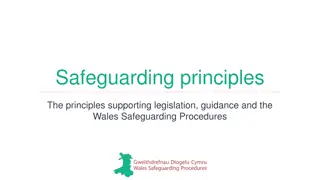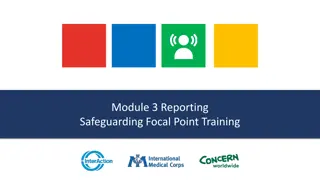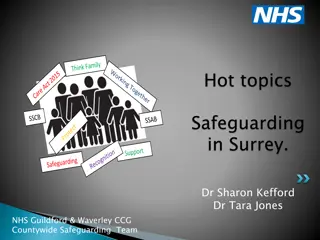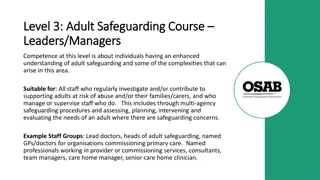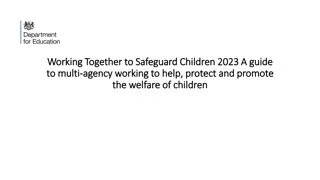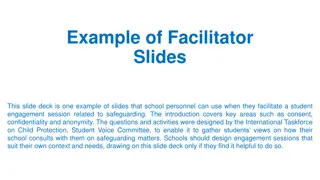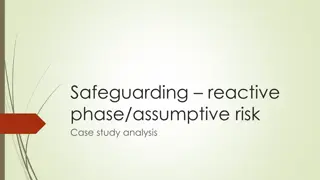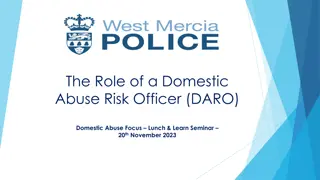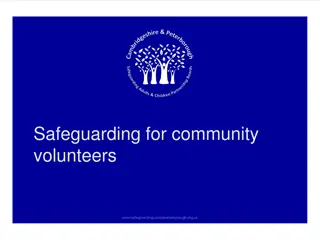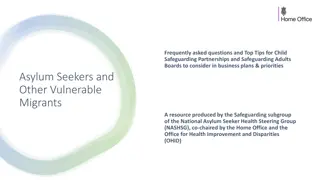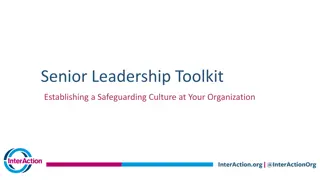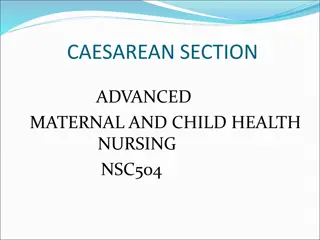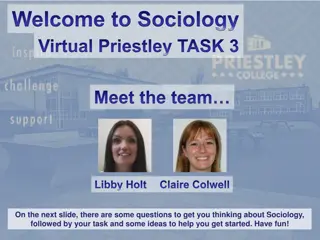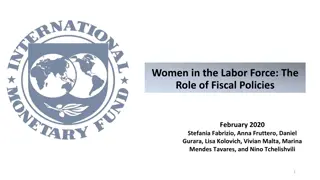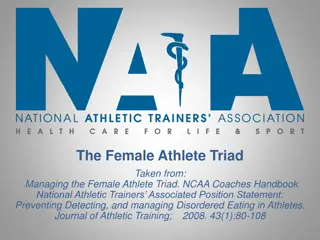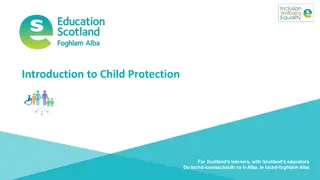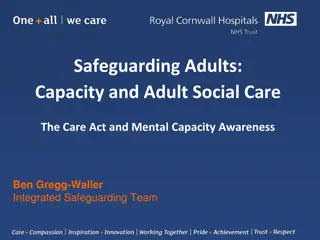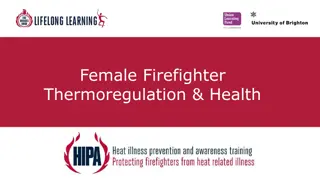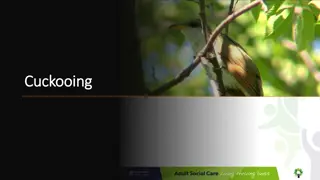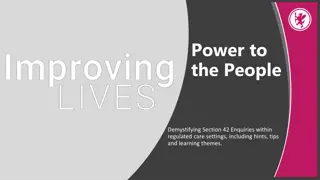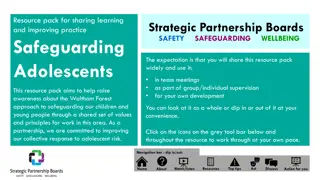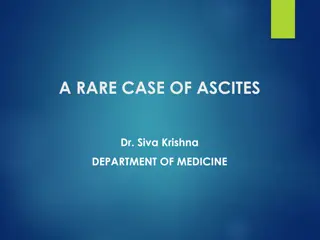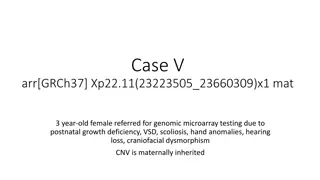Understanding Female Genital Mutilation and Safeguarding Measures
Female Genital Mutilation (FGM) is a harmful practice involving the partial or total removal of the external female genitalia for non-medical reasons. This briefing covers the different types of FGM, key motives behind its practice, prevalence in Africa and the Middle East, indicators of FGM, and the importance of safeguarding adults and children against this practice.
Download Presentation

Please find below an Image/Link to download the presentation.
The content on the website is provided AS IS for your information and personal use only. It may not be sold, licensed, or shared on other websites without obtaining consent from the author. Download presentation by click this link. If you encounter any issues during the download, it is possible that the publisher has removed the file from their server.
E N D
Presentation Transcript
7 Minute Briefing FGM Safeguarding Adults and Children
What is FGM? The World Health Organisation (WHO) defines FGM as all procedure that involve partial or total removal of the external female genitalia, or other injury to the female genital organs for non-medical reasons The WHO has estimated that between 100 and 140 million girls and women worldwide have experienced FGM and up to 3 million
Different types of FGM Type 1 Clitoridectomy: partial or total removal of the clitoris and, in very rare cases, only the prepuce (the fold of skin surrounding the clitoris). Type 2 Excision: partial or total removal of the clitoris and the labia minora, with or without excision of the labia majora. Type 3 Infibulation: narrowing of the vaginal opening through the creation of a covering seal. The seal is formed by cutting and repositioning the inner, or outer, labia, with or without removal of the clitoris.
Also Type 4 Other: All other harmful procedures to the female genitalia for non-medical purposes e.g. pricking, piercing, incising, scraping and cauterising the genital area. FGM is often seen as natural and beneficial Practice which is carried out by a loving family who believe that it is in the girls or woman s best interests This also limits a girls incentive to come forward to raise concerns or talk openly about FGM Reinforcing the need for all professionals to be aware of the issues and risks of FGM
PREVALENCE OF FGM AMONG WOMEN AGED 15-49 IN AFRICA AND THE MIDDLE EAST
Key Motives - FGM Brings status and respect to the girl. Preserves a girl s virginity/chastity. Part of being a woman. Rite of passage. Gives a girl social acceptance, especially for marriage. Upholds the family honour. Cleanses and purifies the girl. Gives the girl and her family a sense of belonging to the community. Fulfils a religious requirement believed to exist. Perpetuates a custom/tradition. Helps girls and women to be clean and hygienic. Aesthetically desirable. Makes childbirth safer for the infant. Rids the family of bad luck or evil spirits.
There are a number of indicators that a girl or woman has already been subject to FGM Difficulty walking, sitting or standing and may even look uncomfortable Spend longer than normal in the bathroom or toilet due to difficulties urinating long periods of time away from a classroom during the day with bladder or menstrual problems. Frequent urinary, menstrual or stomach problems. Prolonged absence from school or college with noticeable behaviour changes on return Particularly reluctant to undergo normal medical examinations May confide in a professional May ask for help, but may not be explicit about the problem due to embarrassment or fear May talk about pain or discomfort between her legs
What are the consequences.FGM chronic vaginal, urine and pelvic infections. difficulties with menstruation. renal impairment /failure. damage to the reproductive system, including infertility. medical complications leading to incontinence complications in pregnancy pain during sex and lack of pleasurable sensation. psychological damage. increased risk of HIV and other STI s death of mother and child during childbirth.
Barriers to asking for help? Not being believed Not aware of services Isolation Language Fear of being found Disowned Ostracised No recourse to public funds Impact on family Ability to establish a new, independent life?
Children Act (1989) Mental Capacity Act (2005) Care Act 2014 Legal Context Forced Marriage Civil Protection Act (2007) Matrimonial Causes Act (1973) Sexual Offences Act (2003) FGM Act (2003)
Children Act 1989 Child protection procedures can be followed for children under 18 (Children Act 1989) including police powers of protection and EPO s Mental Capacity Act 2005 Individuals may lack capacity if they are unable to Understand information given to them. Retain that information for long enough to be able to make the decision. Weigh up the information available to make the decision. Communicate their decision to others. There is no legal basis on which someone can agree to marriage, civil partnerships or sexual relations on behalf of someone who lacks the capacity to make these decisions independently. However, families sometimes do believe they have the right to make decisions regarding marriage on behalf of their relative. Marriage Act 1949 Minimum age for consenting to marriage is 18 Between 16-18 all with parental responsibility must also consent Matrimonial Causes Act 1973 A marriage is voidable if either party to the marriage did not validly consent to it Matrimonial Causes Act 1973 12c)
FGM Act 2003 Offence of female genital mutilation Offence of assisting a girl to mutilate her own genitalia Offence of assisting a non-UK person to mutilate overseas a girl s genitalia Forced Marriage (Civil Protection) Act 2007 Introduced Forced Marriage Protection Orders FMPOs can be applied for by Victim Local Authority as a relevant third party The police Any person on behalf of victim with court s permission Care Act 2014 Section 42 of act states where a local authority has reasonable cause to suspect that an adult in its area (whether or not ordinarily resident there) (a)has needs for care and support (whether or not the authority is meeting any of those needs), (b)is experiencing, or is at risk of, abuse or neglect, and (c)as a result of those needs is unable to protect himself or herself against the abuse or neglect or the risk of it. The local authority must make (or cause to be made) whatever enquiries it thinks necessary to enable it to decide whether any action should be taken in the adult s case and, if so, what and by whom.
Ending FGM Awareness raising Supporting victims / potential victims Be open to possibility these issues may be a reality Create opportunities for disclosure and believe them Challenge the normalisation , cultural sensitivity and lowering of standards Signpost to other services Bring these issues out of the dark No-one to hide murder and abuse behind culture Challenge the idea of leaders of the community We may never see FGM but we can challenge behaviour that supports it
Contact details In an emergency Police 999 / 101 For Adults Gateway to Care 01484 414933 For Children Front Door Children s services 01484 414960 Out of hours 01484 414960


